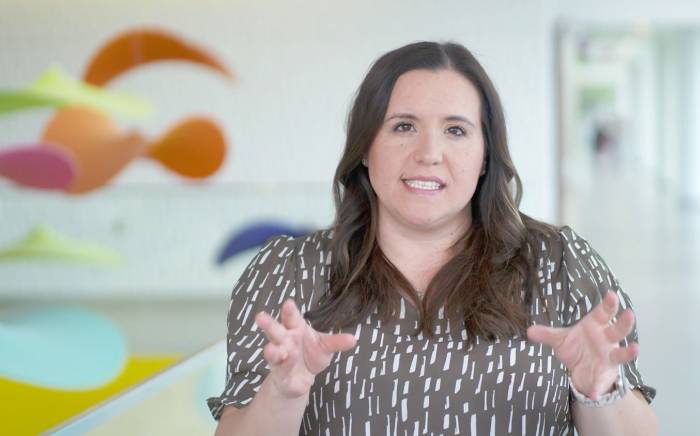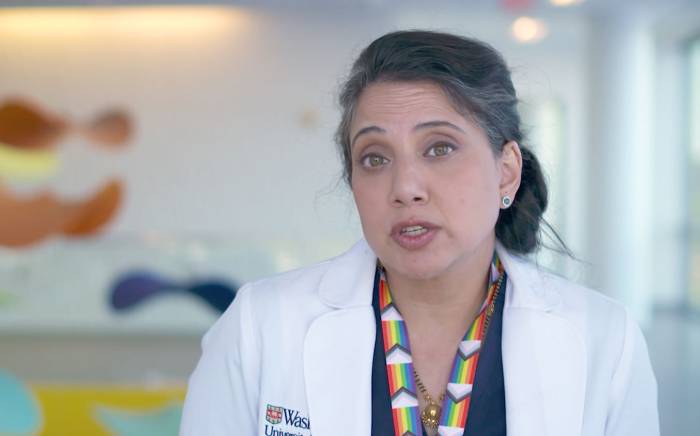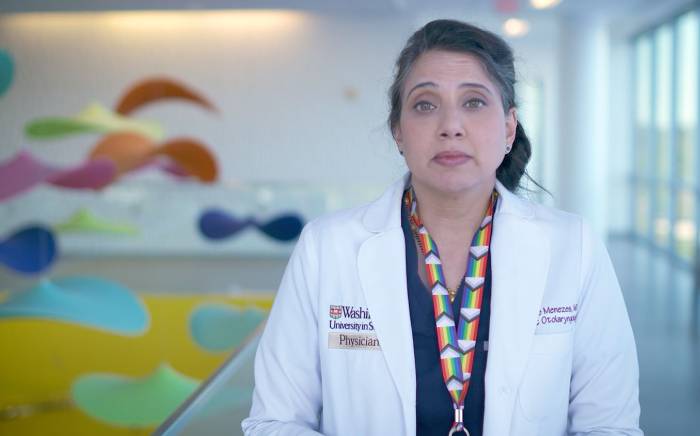Overview of Duchenne Muscular Dystrophy
Duchenne muscular dystrophy (DMD) is a rare genetic condition that weakens your child’s muscles. It is the most common muscular dystrophy, a kind of inherited muscle disease. DMD causes weakness and muscle loss that spreads throughout your child’s body.
DMD appears in young boys, usually between ages 2 and 5. It causes muscle loss that gets worse over time. Most boys with DMD need a wheelchair by the time they are teenagers. DMD damages the muscles needed for movement. DMD also can weaken the heart muscle and make the heart enlarge (dilated cardiomyopathy). DMD has no cure, but some people with DMD can live into their 40s and 50s.
How to say it:
doo-SHEHN
Causes of Duchenne Muscular Dystrophy
DMD is caused by changes (mutations) in the gene that helps make dystrophin. Dystrophin is an important protein in muscle cells. It helps keep the muscle fibers stable and protects them.
Muscles are made up of bundles of long muscle fibers (muscle cells). These fibers pull together (contract) when nerve signals from the brain travel to the specific spot (junction) where the nerve activates the muscle. Dystrophin is part of a complex set of proteins that normally protect your child’s muscle fibers as they contract and relax.
In DMD, the gene changes cause your child's body to make very little or no dystrophin. Without enough dystrophin, the muscle cells become leaky and die. This causes the muscles to weaken. If the gene can still make some dystrophin, the condition has milder symptoms. This is called Becker muscular dystrophy. People with DMD generally don’t have any dystrophin at all.
DMD generally affects boys because the dystrophin gene is on the X chromosome. Chromosomes are the parts of your cells that contain your genes. Boys have only one X chromosome. Girls have two X chromosomes, one from each parent. Boys get one X chromosome from their mother and one Y chromosome from their father. The condition only rarely affects girls.
Because a boy has only one copy of the dystrophin gene, a DMD mutation means that he will not have enough dystrophin to keep his muscles working well. For this reason, DMD is called an X-linked condition. When a girl inherits a DMD mutation on one of her X chromosomes, she usually gets enough dystrophin from a healthy gene on the other X chromosome. But some girls don’t have quite enough dystrophin. This causes mild to moderate DMD symptoms and disease of the heart muscle (cardiomyopathy).
Women who have a DMD mutation are DMD carriers. They have a 1 in 2 chance of passing the gene on to each child. If a boy gets the mutation, he gets the disease. A girl who gets the mutation will be a carrier. A mutation can also sometimes happen without being passed on from a parent. This is called a de novo mutation.
Symptoms
Muscle weakness begins in young children. It affects the hips and thighs before spreading to the arms and the rest of the body. First signs and symptoms of DMD in preschoolers may include:
- Trouble with running, jumping, and climbing stairs
- Using hands to get up from sitting or squatting. This is a movement called Gower sign.
- Enlarged calves
- Waddling
- Leg pain
- Learning problems
As the disease gets worse, DMD can lead to:
- Broken bones from falling
- Greater need for a wheelchair
- Curving of the spine (scoliosis)
- Stiff joints that can’t move (contractures)
- Tiredness (fatigue) and weakness
- Shortness of breath or other breathing problems
- Irregular heartbeat or other heart problems
Diagnosis
Your child’s healthcare provider will take a full health history and ask about current symptoms and past health conditions. They will ask about related conditions in the family. They usually do a physical exam and lab tests. Your child may need tests that include:
- Blood tests to check for muscle enzymes such as creatine kinase
- DNA blood tests to look for dystrophin changes
- Dystrophin analysis, a blood test that looks at your dystrophin
- Electromyography to measure the electrical activity of the muscles
- MRI or ultrasound to look at the muscles
- Muscle biopsy to look at the muscle cells or confirm a diagnosis
Your child may first see their main healthcare provider and then be diagnosed by a neurologist. Some neurologists have special training to treat nerve and muscle diseases such as DMD. Your child may also need care from other providers such as cardiologists, pulmonologists, and physical therapists.
Treatment
DMD has no cure, but many supportive treatments can help manage the condition. Some possible treatments for children with DMD include:
- Steroid medicine. This may help slow loss of muscle.
- Heart medicines. These can help treat cardiomyopathy.
- Pacemakers or other heart devices. These can help keep the heartbeat regular.
- Breathing devices. These can help your child get enough air. Many people with DMD sleep with a breathing machine mask at night. Your child may also need a tracheostomy device.
- Range-of-motion exercises. These can help your child stay flexible and limit contractures of the joints. Gentle exercise like water exercises may be safe. Your child’s healthcare team can help design a safe exercise program for your child.
- Surgery. Surgery can ease contractures or straighten a curved spine. But children with DMD have extra risks with anesthesia.
- DNA-targeted medicine. Eteplirsen targets the DNA in people with DMD. It can help with muscle weakness and atrophy. Only a small portion of people with DMD may be helped with this medicine.
Advances in care have improved the life expectancy for people with DMD. Researchers are working on developing new medicines.
Complications
In addition to muscle weakness throughout the body, DMD can cause serious problems for the heart and lungs. Your child may need these tests:
- Breathing tests
- Echocardiograms to see how well your child’s heart is working
- Electrocardiograms to check heart rhythms
- Swallowing studies to check for problems that affect eating
- X-rays to look for scoliosis
- Bone scans to watch bone health
Prevention
Because DMD is a genetic disorder, you can’t do much to prevent it. But if DMD runs in your family, you may consider talking with a genetic counselor and getting testing before having children. If you or your partner has the DMD gene, you may decide to check your fertilized eggs and implant only those that do not have DMD. If you or your partner recently got pregnant, you can also choose to test the fluid outside the fetus to see if the fetus has DMD.
Living with
Work with your child’s healthcare provider and their healthcare team. Your child may need healthcare providers who can help with the neuromuscular, orthopedic, respiratory, and heart problems of DMD. Your family may get help from social and mental health support.
Physical therapists and occupational therapists can help your child keep their independence and mobility as the condition gets worse.
While your child can still walk, some helpful therapies include:
- Range-of-motion movements of the ankle, hip, and knee joints to keep mobility
- Lower-leg braces and hand splints to prevent contractures
- Lightweight manual wheelchair for long distances
Once your child is using a wheelchair full-time, the following may also help:
- Range-of-motion movements of the shoulder, elbow, wrist, and finger joints, in addition to the leg joints
- Powered wheelchair
- Mechanical lift
- Special powered beds
You and your family may want to look for more information on your child’s condition at the Muscular Dystrophy Association.
Key Points
- DMD is a genetic disease of young boys that causes muscle weakness throughout the body.
- DMD is caused by a defect in the gene that helps make dystrophin. This is a protein that plays a key role in protecting muscle fibers.
- Symptoms include muscle weakness. You may notice that your child has trouble running, jumping, or climbing stairs.
- A healthcare team can help your child manage the different aspects of DMD.
Next Steps
Tips to help you get the most from a visit to your child’s healthcare provider:
- Know the reason for the visit and what you want to happen.
- Before your visit, write down questions you want answered.
- At the visit, write down the name of a new diagnosis and any new medicines, treatments, or tests. Also write down any new instructions your provider gives you for your child.
- Know why a new medicine or treatment is prescribed and how it will help your child. Also know what the side effects are.
- Ask if your child’s condition can be treated in other ways.
- Know why a test or procedure is recommended and what the results could mean.
- Know what to expect if your child does not take the medicine or have the test or procedure.
- If your child has a follow-up appointment, write down the date, time, and purpose for that visit.
- Know how you can contact your child’s provider after office hours. This is important if your child becomes ill and you have questions or need advice.









